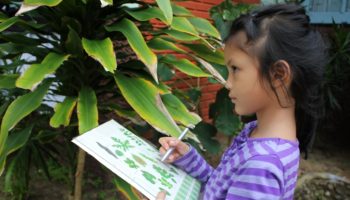Pam Schaffner
The assessment team in PA is often asked if they have any tips to make meeting quality standards easier. Since they have experience visiting many programs in their professional careers, they have seen many programs employ strategies to make things easier, more efficient, and more effective. Implementing quality can be stressful or time consuming, but it is always worth it. So, this Q-T Corner moment aims at helping you along the way.
Installment #2
Incorporating science into the classroom can be easy. How?
What are considered science materials, especially for infants and toddlers, and are they safe?
Tip #1 Cartoon animal pictures on walls, in books, on puzzles, etc. are NOT science.
- To expose children to the world around them, it is vital that depictions of animals are realistic. Animals smiling, talking, or otherwise behaving as humans can add enjoyment to the experiences of the children but not teach them about real pets, insects, dinosaurs, farm or zoo animals. Make sure pictures, books, and small animal figures represent realistic animals.
Tip #2 Double dip on quality
- This is a great idea if you are limited on space in your classroom. Numerous science materials can double as materials of other types. For example, a realistic dinosaur puzzle not only helps children be exposed to science, but also is a fine motor material. A hanging plant not only is a nature material, but also counts as a mobile in classroom display. Of course, science books are for science learning and literacy and seashells can be compared and weighed and counted if included in a math area.
Tip#3 Aren’t most science materials small and choking hazards? Why do science materials need to be in infant and toddler classrooms as well?
- Children, regardless of age, are keen observers of the world around them. They learn through observation, and thus, experiences with nature and science are necessary to foster this learning. Children who come to child care, like all children, need experiences with the natural world and including them indoors is important. When children cannot get outdoors because of frigid temperatures, high heat indexes, or rain, they can certainly benefit from including science and nature toys and materials indoors.
- Some materials are too small for infants and toddlers to experience. Small shells, seeds, and rocks, for example, are very dangerous. If these materials are small enough to fit inside of a choke tube, there is still a way to let children experience them. Putting them into containers such as clear boxes or bottles can still provide children a way to visually experience these items.
Some natural objects do come as a larger size. Large seashells, for example, can provide a greater experience for the children because they can be touched, smelled, etc. and not just viewed through a container.


